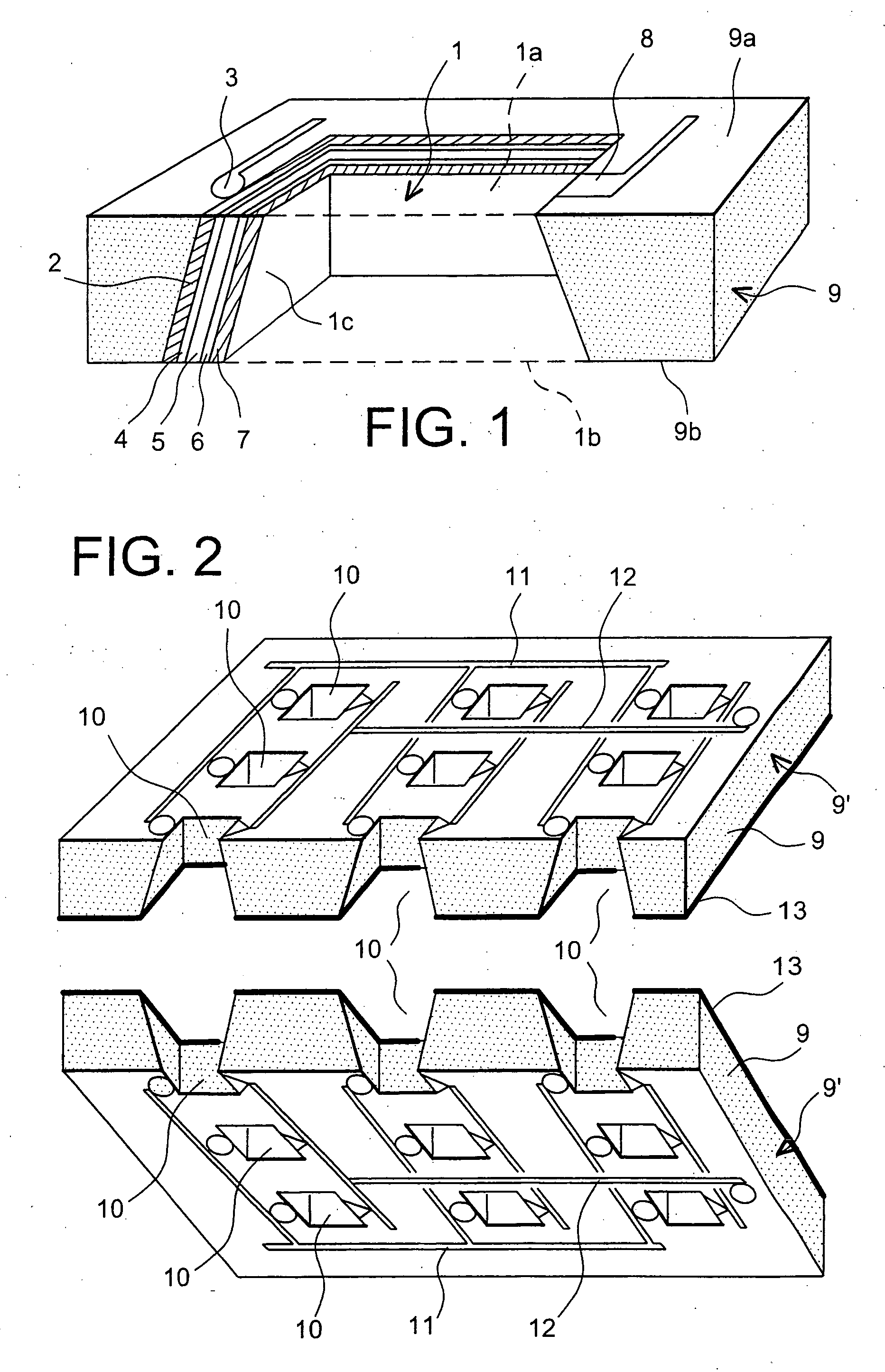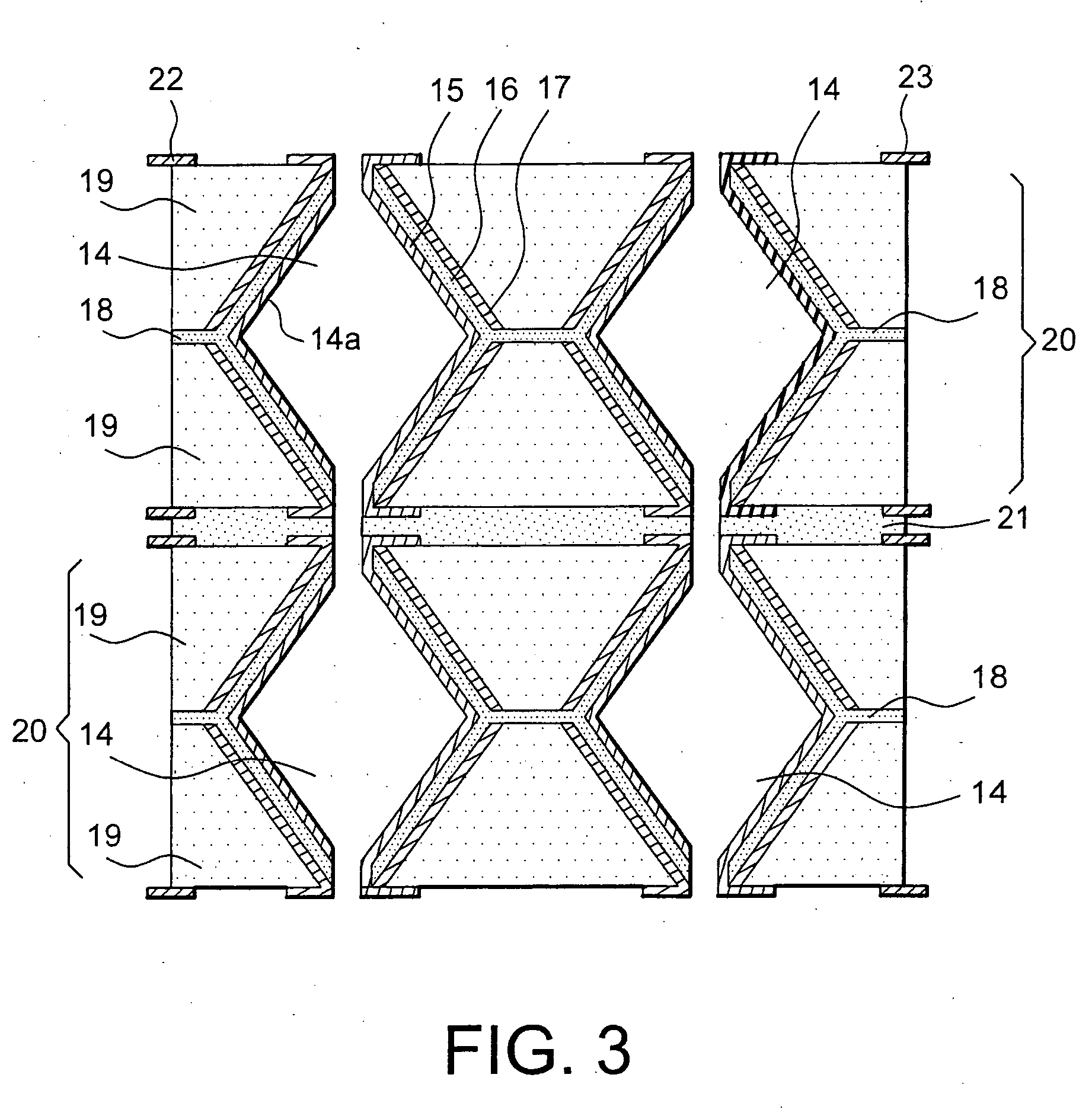Method for making a fuel cell with large active surface and reduced volume
- Summary
- Abstract
- Description
- Claims
- Application Information
AI Technical Summary
Benefits of technology
Problems solved by technology
Method used
Image
Examples
example
The objective is to develop an active surface area of 350 cm2 for a visible surface area of 25 cm2 and an energy of 10 Wh.
To do this, the substrate is a single-crystal silicon wafer with a thickness of 400 micrometres and a visible surface area of 25 cm2, on which is etched a network of holes. The holes are formed by plasma etching and have a square cross section with a side length of 100 micrometres, an opening surface area of 56%, the opening surface area corresponding to the ratio between the hollow surface area and the total surface area, and a reduction factor of 80% between the entry surface area and the exit surface area of the holes. Consequently, the developed surface area is seven times larger than the visible surface area. The thin films required to form a fuel cell are deposited in succession on the flanks of the holes, these films specifically comprising: an anode comprising, in the context of the present example, a current collector and a catalyst layer deposited b...
PUM
| Property | Measurement | Unit |
|---|---|---|
| Composition | aaaaa | aaaaa |
| Adhesion strength | aaaaa | aaaaa |
| Shape | aaaaa | aaaaa |
Abstract
Description
Claims
Application Information
 Login to View More
Login to View More - R&D
- Intellectual Property
- Life Sciences
- Materials
- Tech Scout
- Unparalleled Data Quality
- Higher Quality Content
- 60% Fewer Hallucinations
Browse by: Latest US Patents, China's latest patents, Technical Efficacy Thesaurus, Application Domain, Technology Topic, Popular Technical Reports.
© 2025 PatSnap. All rights reserved.Legal|Privacy policy|Modern Slavery Act Transparency Statement|Sitemap|About US| Contact US: help@patsnap.com



